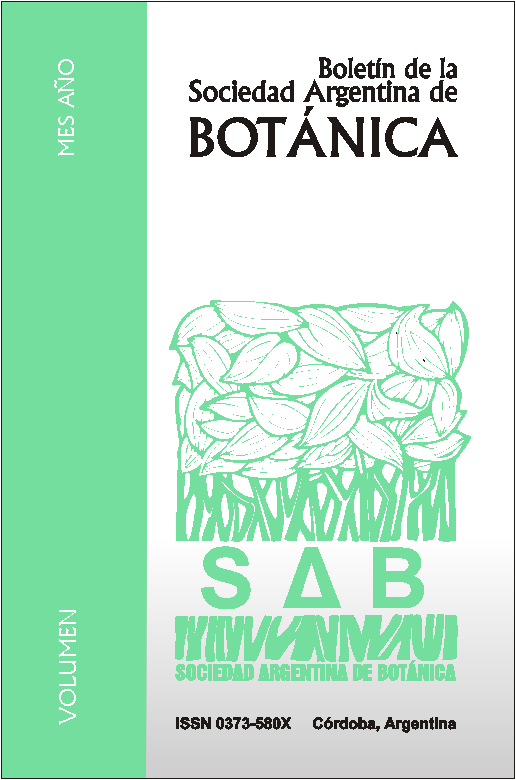Silicophytolith analyses in species of Cannabaceae, Moraceae and Urticaceae from SE Buenos Aires province and a comparative study of their cystoliths.
DOI:
https://doi.org/10.31055/1851.2372.v53.n2.20580Keywords:
Amorphous silica biomineralization, Morus alba, Celtis spp., Parietaria spp., Urtica urens, SE Pampean region.Abstract
Silicophytolith analyses in species of Cannabaceae, Moraceae and Urticaceae from SE Buenos Aires province and a comparative study of their cystoliths. Numerous families produce silicophytoliths in their tissues, which constitute a relevant taxonomic and palaeobotanical tool. Cystoliths are one of the morphologies produced by dicotyledons, and they are defined as deposits of amorphous calcium carbonate with a silica stalk. This amorphous silica stalk remains on soils and sediments, and constitutes a diagnostic morphology for palaeoenvironmental and archaeological phytolith studies. In this work, the phytoliths of six species of Cannabaceae, Moraceae and Urticaceae, all cystolith producers, were analyzed. Phytoliths were extracted through a calcination technique, and the description of the morphologies and the measurements on cystoliths were carried on through optic and scanning electron microscopes. Statistical tests were applied in order to analyze differences. All the species analyzed produced phytoliths. The first descriptions for three species of Urticaceae and one of Moraceae were shown. Cystoliths, hairs and polyhedrical phytoliths were described, and differentiation was achieved at family level. Celtis spp (Cannabaceae) and Morus alba L. (Moraceae) produce phytoliths different from Urticaceae species, and they present a hair associated, they are thinner and shorter. These features, as wellDownloads
Downloads
Published
How to Cite
Issue
Section
License
Provides immediate and free OPEN ACCESS to its content under the principle of making research freely available to the public, which fosters a greater exchange of global knowledge, allowing authors to maintain their copyright without restrictions.
Material published in Bol. Soc. Argent. Bot. is distributed under a Creative Commons Attribution-NonCommercial-ShareAlike 4.0 International license.









